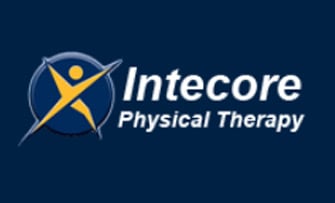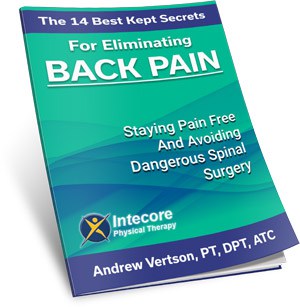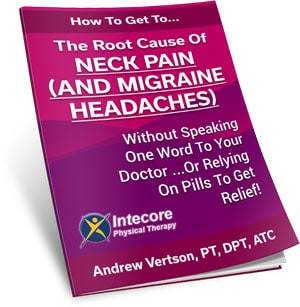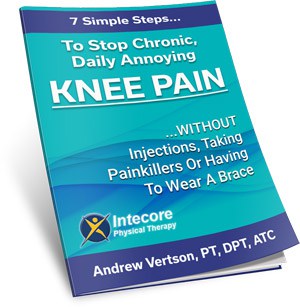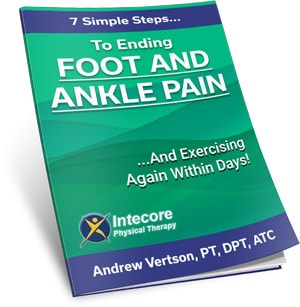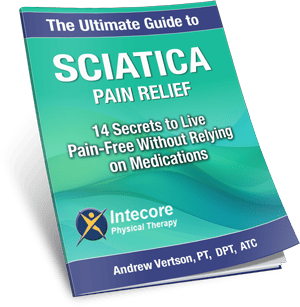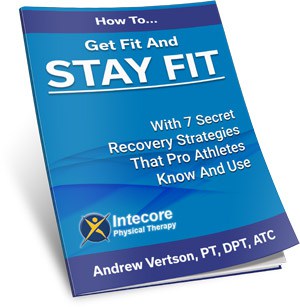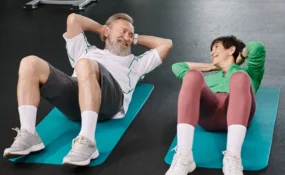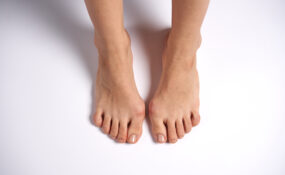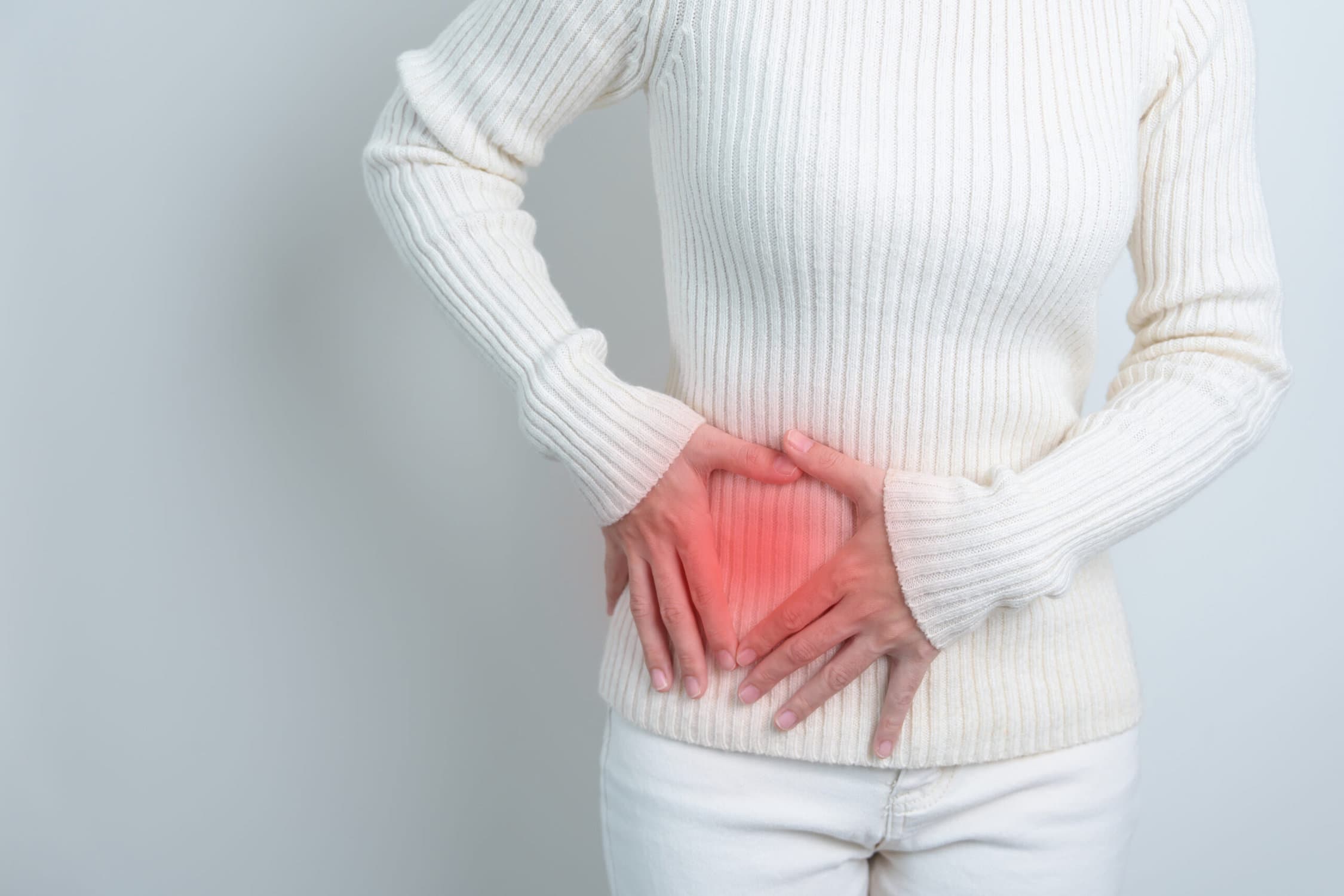
Experiencing a sudden, sharp pain in the hip can be both alarming and debilitating. It’s a common complaint among many of my patients at our physical therapy clinic, and if you’re reading this, chances are you’re looking for some answers and relief.
Hip pain can stem from a variety of causes, ranging from acute injuries to chronic conditions. Understanding the source of your pain is important in determining the most effective treatment approach. In this post, we’ll explore the common causes of hip pain and provide practical, evidence-based tips to help you find relief. Whether you’re dealing with an occasional sharp twinge or a persistent ache, these strategies are designed to ease your pain and improve your mobility.
More Posts Like This From Intecore:
Thigh Pain After Hip Replacement: Causes, Solutions, and Tips
Why You Should be Doing “Hip Dips”?
Is Exercising Making My Hip Pain Worse?
Table of Contents
1. Maintain Proper Posture

Good posture plays a vital role in distributing your body weight evenly and reducing strain on your hip joint. This is particularly important if you’re experiencing sharp pain in your hip.
Here are some tips to help maintain good posture:
Sit and Stand with Proper Alignment
- While Sitting: Keep your feet flat on the floor, and avoid crossing your legs. Your knees should be at or slightly lower than hip level. Ensure your back is supported, with your shoulders relaxed and your ears aligned over your collarbones.
- While Standing: Distribute your weight evenly on both feet, and keep your knees slightly bent to avoid locking them. Align your head over your shoulders, and keep your shoulders back but relaxed.
Use Supportive Seating For Sharp Pain In Hip
Investing in an ergonomically designed chair is completely worth it when it comes to looking after your body. Look for chairs with proper lumbar support that encourage a neutral pelvis position. If you work at a desk, consider an adjustable chair that allows you to change your position throughout the day.
2. Engage in Gentle Stretching Exercises
Stretching can help alleviate sharp hip pain by improving flexibility, reducing tension in the muscles, and enhancing blood flow. Here are some stretches that can help:
Hip Flexor Stretch
- Kneel on the floor and step your right foot forward so your right knee is over your right ankle.
- Keep your left knee on the floor, slightly behind you.
- Gently push your hips forward, feeling a stretch in the front of your left hip.
- Hold for 20-30 seconds and switch sides.
Gluteal Stretch
- Sit on a chair and cross your right ankle over your left knee.
- Gently lean forward, keeping your back straight, until you feel a stretch in your right glute.
- Hold for 20-30 seconds and switch sides.
Quadriceps Stretch
- Stand next to a wall for balance and grab your left foot with your left hand.
- Gently pull your foot towards your buttocks until you feel a stretch in the front of your thigh.
- Keep your knees close together and your pelvis neutral.
- Hold for 20-30 seconds and switch sides.
3. Strengthen Hip Muscles
Strengthening the muscles around your hip joint can help support the joint, alleviate pain, and prevent further injury. Here are some exercises that will help:
Hip Abduction Exercises
- Lie on your side with your legs stacked.
- Lift your top leg towards the ceiling while keeping your pelvis stable.
- Lower it back down slowly.
- Do 10-15 repetitions and switch sides.
Hip Extension Exercises
- Stand facing a wall, using it for support.
- Slowly extend one leg back, keeping your knee straight but not locked.
- Hold for a few seconds, then return to the starting position.
- Do 10-15 repetitions and switch legs.
Hip Flexion Exercises
- Sit in a chair without leaning back.
- Slowly lift one knee toward your chest while keeping the other foot flat on the floor.
- Lower it back down and repeat.
- Do 10-15 repetitions and switch legs.
You can find more exercises here.
4. Apply Heat or Cold Therapy
One of the simplest and most effective ways to manage pain is through heat or cold therapy. These therapies can provide immediate pain relief and reduce inflammation.
Using Heat Therapy
Heat therapy works by improving circulation and blood flow to a particular area due to increased temperature. This can help relax and soothe muscles.
- When to Use: Heat is generally used to help relax and loosen tissues and stimulate blood flow to the area. It’s ideal for muscle stiffness or ongoing discomfort.
- How to Apply: Use a warm towel, hot pack, or a warm bath to apply heat to the affected area. Ensure the temperature is comfortable and not scalding. Apply for about 15-20 minutes at a time.
Using Cold Therapy
Cold therapy works by reducing blood flow to a particular area, significantly reducing inflammation and swelling that causes pain, especially around a joint or a tendon.
- When to Use: Cold therapy is best used for acute injuries or pain, along with inflammation and swelling. It’s especially effective if used within 48 hours of an injury.
- How to Apply: You can use ice packs, frozen gel packs, or even a bag of frozen peas. Wrap the cold pack in a thin towel to protect your skin and apply it to the affected area for about 15-20 minutes.
5. Use Assistive Devices
For those experiencing unexplained hip pain, assistive devices can be a game-changer. They are designed to reduce the load on your hip, enhance stability, and ultimately help in managing pain effectively.
Types of Assistive Devices
- Canes or Walking Sticks: A cane can take some of the weight off your hip joint while walking, helping to reduce pain and improve mobility. Ensure the cane is the correct height and used on the opposite side of the painful hip for optimal support.
- Walkers: For those needing more stability than a cane, a walker can be a good option. It provides support on both sides, allowing for balanced walking without putting too much strain on the hip.
- Shoe Inserts or Orthotics: These are particularly useful if your hip pain is due to issues with foot alignment or gait. Custom orthotics can help correct these problems, thereby reducing the stress on your hip.
Before opting for an assistive device, it’s advisable to consult with a physical therapist or healthcare professional. They can assess your condition, guide you in selecting the most appropriate device, and teach you how to use it correctly.
Ready to Get Relief?
If you’ve found this blog helpful and are eager to get the help you deserve we invite you to take the next step with us. To find out more, click here to fill out this form and tell us more about what’s going on, and our team will be in touch. You can also give us a call here: 949-565-4944
- 7 Ways to Get Rid of Tension Headaches Naturally - July 1, 2025
- Why Are My Feet Swollen? Common Causes Explained - June 2, 2025
- What Is Restless Leg Syndrome? Symptoms, Causes, and Relief Options - May 5, 2025


